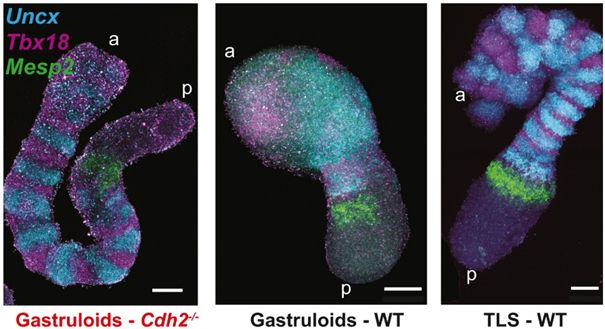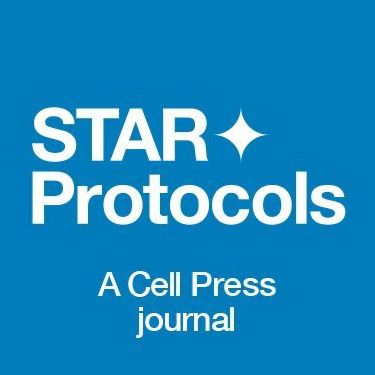



www.nature.com/articles/s41...

www.nature.com/articles/s41...


Neural stem cells were cultured adherent on Matrigel and then fixed with 4% PFA. The samples were stained with DAPI and TOM20.
After staining, a 4× expansion microscopy protocol was applied. Samples were imaged using a Zeiss LSM980 Airyscan confocal microscope with a 40× water-immersion obj.
Neural stem cells were cultured adherent on Matrigel and then fixed with 4% PFA. The samples were stained with DAPI and TOM20.
After staining, a 4× expansion microscopy protocol was applied. Samples were imaged using a Zeiss LSM980 Airyscan confocal microscope with a 40× water-immersion obj.


biosignaling.biomedcentral.com/articles/10....
another big milestone from the Maina lab @crcm.bsky.social ! Contratulations!

biosignaling.biomedcentral.com/articles/10....
another big milestone from the Maina lab @crcm.bsky.social ! Contratulations!
@cp-cellreports.bsky.social! Matrigel-free PDOs preserve patient-specific cell populations. New single-cell atlas (PPScA) maps heterogeneity + reveals pathways altered in vitro.

@cp-cellreports.bsky.social! Matrigel-free PDOs preserve patient-specific cell populations. New single-cell atlas (PPScA) maps heterogeneity + reveals pathways altered in vitro.
- Ethanol
- Conical tubes
- Laminin
- Poly-L-Ornithine
- ROCKi (Y-27632)
- STEMdiff™ SMADi Neural Induction Kit
- 6-well flat-bottom plate
- Serological pipettes
- Matrigel
- DMEM
- D-PBS
- Gentle Cell Dissociation Reagent
- Tip box
(2/9)

- Ethanol
- Conical tubes
- Laminin
- Poly-L-Ornithine
- ROCKi (Y-27632)
- STEMdiff™ SMADi Neural Induction Kit
- 6-well flat-bottom plate
- Serological pipettes
- Matrigel
- DMEM
- D-PBS
- Gentle Cell Dissociation Reagent
- Tip box
(2/9)
bsky.app/profile/epim...

bsky.app/profile/epim...
✅ Reproducible
✅ Scalable
✅ Human-relevant
👉 www.peptimatrix.com
#AnimalFree #NAMs #LifeSciences #cells

✅ Reproducible
✅ Scalable
✅ Human-relevant
👉 www.peptimatrix.com
#AnimalFree #NAMs #LifeSciences #cells
Consider Metatissue's hPLMA as a reproducible, xeno-free alternative!
hPLMA is a #humanplateletlysates derived platform providing physiologically relevant microenvironments for #cellculture 🧪
ilexlife.com/products/met...

Consider Metatissue's hPLMA as a reproducible, xeno-free alternative!
hPLMA is a #humanplateletlysates derived platform providing physiologically relevant microenvironments for #cellculture 🧪
ilexlife.com/products/met...
🔁 Passage the #organoids into fresh Matrigel® every 10–14 days according to the proper split ratio (~80–100 organoids per dome).
🔁 Passage the #organoids into fresh Matrigel® every 10–14 days according to the proper split ratio (~80–100 organoids per dome).
Let the Matrigel® solidify at 37°C for 10 minutes.
Let the Matrigel® solidify at 37°C for 10 minutes.
- STEMdiff™ Intestinal Organoid Kit
- DMEM/F-12 + 15 mM HEPES
- L-Glutamine
- Human Recombinant EGF
- Human Recombinant BMP2
- CHIR99021
- NeuroCult™ SM1 Neuronal Supplement
- Corning® Matrigel® Growth Factor Reduced, Phenol Red-Free
- Desired antibiotics
- STEMdiff™ Intestinal Organoid Kit
- DMEM/F-12 + 15 mM HEPES
- L-Glutamine
- Human Recombinant EGF
- Human Recombinant BMP2
- CHIR99021
- NeuroCult™ SM1 Neuronal Supplement
- Corning® Matrigel® Growth Factor Reduced, Phenol Red-Free
- Desired antibiotics

Scientists at @utbiomedical.bsky.social & UGA developed this new, imaging-ready #microfluidic platform for research, drug screening, & disease modeling.
Preprint by Moshksayan et al.
www.biorxiv.org/content/10.1...

Scientists at @utbiomedical.bsky.social & UGA developed this new, imaging-ready #microfluidic platform for research, drug screening, & disease modeling.
Preprint by Moshksayan et al.
www.biorxiv.org/content/10.1...

